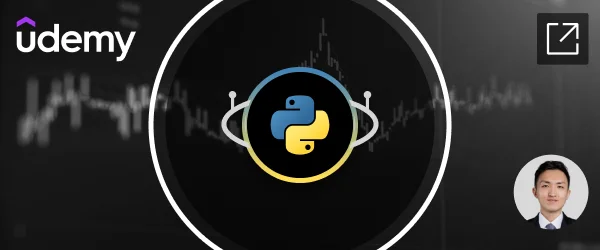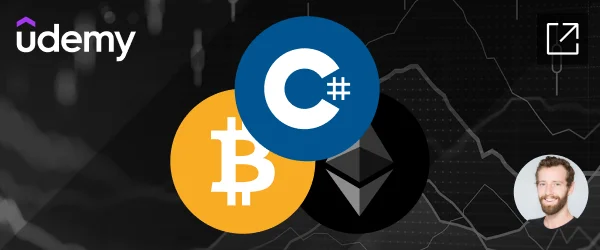What is Boot Camp?
Boot Camp is a great way to improve your skills and learn the QuantConnect API in easily digestible portions.
Don't have an account? Join QuantConnect Today
We are dedicated to providing investors with a cutting-edge platform for rapidly creating quant investment strategies. Founded in 2012, we've empowered more than 250,000 quants and engineers to create and trade their ideas.


Quickly and easily started with our API to build your strategy. The learning center lessons are interactive, step-by-step guides to make you productive as fast as possible.


Focus your efforts on driving alpha, not parsing CSV files. Our cloud offers hundreds of terabytes of traditional and alternative data preformatted, cleaned, and instantly accessible by our API.


Coordinate teamwork, control access permissions, and your shared cloud resources. Grow your trading organization safely and efficiently on top of our cloud architecture.


A selection of streaming live-trading strategies written by QuantConnect, and top highlights from the community available to follow and clone. Peer into detailed real-time positions to gain insight for your own trading.




LEARNING CENTER



 All Courses
All Courses

 In Progress
In Progress

 Completed
Completed

 Wish List
Wish List
What is Boot Camp?
Boot Camp is a great way to improve your skills and learn the QuantConnect API in easily digestible portions.



 All Courses
All Courses

 In Progress
In Progress

 Completed
Completed

 Wish List
Wish List
Master the basics of algorithmic trading with guided lessons from QuantConnect.
Build essential research skills to test ideas and improve strategies.
Expand your knowledge with additional content from external experts.

Master algorithmic trading with Python and AI. Backtest & live‑trade stocks, options, futures, forex and crypto
Author: Cheng Li
Paid | Enroll on Udemy

Learn to use Python, Pandas, Matplotlib, and the QuantConnect Lean Engine to perform financial analysis and trading.
Author: Jose Portilla, Pierian Training
Paid | Enroll on Udemy

Learn to write programs that algorithmically trade cryptocurrencies using QuantConnect (C#).
Author: Eric Summers
Paid | Enroll on Udemy
| | Author:
About Instructors Requirements Syllabus Reviews
|




Start Lesson Add Task
Add Lesson
Course Header 3 x 1 Ratio
Course Thumbnail 2 x 1 Ratio
Course Tile 1 x 1 Ratio

Upgrade to an annual plan before your trial expires , to get an additional month free, saving a total of compared to our monthly plans.

 New Algorithm
New Algorithm

 Open Project
Open Project

 Explore Strategies
Explore Strategies





You haven't created any projects yet.
Create Your First ProjectLoading recent projects...
You haven't created any projects yet.
Click here to Create Your First ProjectWe have scheduled your subscription cancellation for . Stop this cancellation.
Organization Notes
Get Started with Algorithm Lab




New Research
Trading Volatility with Options
Trade volatility using SPX options, VIX, and straddles based on market expectations....
ReadBootCamp Progress


Organization Summary
Resources
Members
Estimated Bill Date:


The QuantConnect Team wishes you
MERRY CHRISTMAS

From the QuantConnect Team


You've been with us for years!
HAPPY ANNIVERSARY!Thank you for being a valued member.




Home >
Project Name
Collaborators
Modified




Algorithm Lab is your playground for developing and refining trading algorithms with QuantConnect. Utilize advanced tools, historical data, and robust backtesting to enhance your trading strategies. Transform your ideas into actionable insights and optimize your trading approach with ease.
Sign Up for FreeAlready have an account Log In.






















This account is not protected by two-factor authentication.
Deactivate 2FA AuthenticationThis account is protected by two-factor authentication.
Request Token Information Reset My Token| Created | Last Time Used | Agent | |
|---|---|---|---|
| Sign Out | |||
|
No entries found |
|||
Deactivating your account hides your profile and data from other members. We retain your data (except backtests older than 90 days) in case you reactivate later. To permanently delete your account, please contact us directly.
To continue please enter your email:
(No google account required)
To verify that everything goes well please enter the 6 digit verification code generated by the authenticator application
Algorithm Lab is your playground for developing and refining trading algorithms with QuantConnect. Utilize advanced tools, historical data, and robust backtesting to enhance your trading strategies. Transform your ideas into actionable insights and optimize your trading approach with ease.
Sign Up for FreeAlready have an account Log In.










QuantConnect Datasets

 All Datasets
All Datasets

 List Dataset
List Dataset

 Data Issues
Data Issues

 Data Status
Data Status

 Sales Report
Sales Report
Explore free and paid datasets available on QuantConnect covering fundamentals, pricing, and alternative options.

Datasets >
Dashboard
A transparent, community reporting system. Report suspected issues with our cloud data to be investigated by the QuantConnect Team.




Data Explorer Issues are a way to report and track data problems. They give the QuantConnect community a way to discuss potential solutions and be notified when they are resolved. If you think you have found a data problem please check the existing open and closed issues first; often another user may have already reported your problem.
Datasets >
Dataset by
LEAN CLI is a cross-platform wrapper on the QuantConnect algorithmic trading engine called LEAN. The CLI makes using LEAN incredibly easy, reducing most of the pain points of developing and managing an algorithmic trading strategy to a few lines of bash.
Using the CLI you can download the same data QuantConnect hosts in the cloud for a small fee. These fees are per file downloaded, and are paid for in QuantConnect-Credits (QCC). We recommend purchasing credits to enable downloading.
The CLI command generator is a helpful tool to generate a copy-paste command to download this dataset from the form below.








Explore free and paid datasets available on QuantConnect covering fundamentals, pricing, and alternative options.


Dataset Status
No Runs
OK
Degraded
Failure




: Process day status .
Explore free and paid datasets available on QuantConnect covering fundamentals, pricing, and alternative options.
Lorem ipsum dolor sit amet conjectura lorem ipsum dolor sit amet conjectura lorem ipsum
Configuration Keys
Environment Variables
Lorem ipsum dolor sit amet conjectura lorem ipsum dolor sit amet conjectura lorem ipsum
File Link
Lorem ipsum dolor sit amet conjectura lorem ipsum dolor sit amet conjectura lorem ipsum
Lorem ipsum dolor sit amet conjectura lorem ipsum dolor sit amet conjectura lorem ipsum
Upload a manually created tar or zip file to all cloud data systems.
Add a link and click the Sync Dataset button to upload the dataset
Upload Destinations
The dataset synchronizer is an internal tool for the QuantConnect team to upload data to the
cloud data storage environments. It supports TAR files which are extracted in the root directory
of the cloud data environments.
Take extreme care to carefully structure your data TAR package with
the same folders as the LEAN data folder. Ensure all folders and file names are lowercase as Linux is case-sensitive.
Support

 Create New Ticket
Create New Ticket

 Organization Tickets
Organization Tickets

 Support Seats
Support Seats
Please describe your problem, try to include as much details as possible:
Our support agents are working on your issue and will get back to you soon.
View TicketYour organization has the following support seats
Please use the plans below to add seats to your organization.
Manage organization seats.
Jared Broad
Free when spending >$40 per seat.
Free when spending >$400 per seat.






Strategy Suggestions
Phone Support
Free when spending >$40 per seat.
Free when spending >$400 per seat.








Phone Support
Free when spending >$40 per seat.
Free when spending >$400 per seat.










You do not have any open tickets right now
Go to the support page to open a new ticket

You do not have any closed open tickets right now
Go to the support page to open a new ticket
Algorithm Lab is your playground for developing and refining trading algorithms with QuantConnect. Utilize advanced tools, historical data, and robust backtesting to enhance your trading strategies. Transform your ideas into actionable insights and optimize your trading approach with ease.
Sign Up for FreeAlready have an account Log In.












⭑
⭑
⭑
⭑
⭑
Hover and click over the stars to rate us.
It looks like you are not fully satisfied with your experience on QuantConnect, please take a moment to let us know how we can improve our services for you:


If you have a minute to spare, please leave us a review on Trustpilot.
Stories like yours help others see the full potential of QuantConnect.


 Switch Organization
Switch Organization

 Create Organization
Create Organization
| Organization Name |
|---|

 Update Billing Information
Update Billing Information
Upgrade to Team plan or higher to enable custom invoicing
Changes will be applied to future invoices.


Add members by sending them invitations to join your organization.

 Copy Invite Link
Copy Invite Link


Add members by sending them invitations to join your organization.
Only organization administrators can invite new team members or generate invite links. To add a new member, ask your administrator to share an invite link.




Users will be able to join by following the link in the invitation email.
You’ve been invited by Jared Broad to join his G-Force Organization.
Would you like to accept the invitation?









Drag & Drop or
Keys are added to the local storage in your web browser and not uploaded to QuantConnect. To use an encrypted project on another computer you will need to bring a copy of the key.




This project is encrypted using the key .




This project will be encrypted using the key .